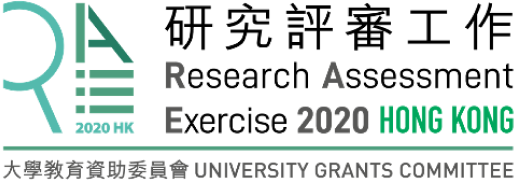Unit of Assessment:
Research categories:
?Clinical Medicine
Public, Environmental & Occupational Health (1)
Neuroscience & Behavior
Clinical Neurology (3)
Psychiatry/Psychology
Psychiatry (7)
Psychology, Multidisciplinary (2)
Funder acknowledgements:
?United States Department of Health & Human Services (1)
The University of Hong Kong (3)
Social Welfare Department of the Hong Kong SAR Government (1)
National Institutes of Health (NIH) - USA (1)
National Institute for Health Research (NIHR) (1)
National Health Research Institutes - Taiwan (2)
Ministry of Science and Technology of Taiwan (2)
University Grants Committee and Research Grants Council (5)
HKSAR Quality Education Fund (QEF) (1)
Hong Kong Jockey Club Charities Trust (1)
Case Study
Preventing suicide in Hong Kong: a multidisciplinary approach
1. Summary of the impact
Suicide is a major global public health challenge with more than 800,000 death every year. It is the leading cause of death among our youth [R1]. It has caused much disease burden and huge economic loss to the society. Every country is looking for solutions. World Health Organization has set the target to reduce the suicide rate by 10% for the period 2003-2010. Centre for Suicide Research and Prevention (CSRP) was established in 2001 in response to the unprecedented increase in suicide rates in Hong Kong, from 11.0 in 1997 to 18.8 in 2003.
Since 2013, and building on earlier research, CSRP has had a significant impact on health and wellbeing in Hong Kong in four key areas
- restricting suicide means;
- influencing responsible media coverage;
- raising awareness of mental health and suicide prevention among youth;
- mobilising a range of stakeholders to collaborate and prevent suicides in and for the community.
These concerted efforts have contributed to a steady decline in suicide rates (per 100,000 people) in Hong Kong, from a historical high in 2003 of 18.8, to 13.1 in 2013 and 11.5 in 2018 (a 40% reduction for the period 2003-2018).
2. Underpinning research
The causes of suicide in Hong Kong are complex and include bio-psycho-social-environmental factors; and suicide prevention must encompass both responsive and proactive measures. The founding director of CSRP, Prof. Paul Yip and his multi-disciplinary team undertook funded research that underpinned the following four pathways to impact.
2.1 Restricting Suicide Means
Restricting access to suicide means is a key suicide prevention strategy [R1]. Charcoal burning has become a major suicide method in Hong Kong, with cases rising from 2% (16 persons) of all suicides in 1998 to over 26% (320 persons) in 2003. In 2006-2007, CSRP conducted a 12-month experimental study in a district of Hong Kong with more than 500,000 residents where, with the support of the local supermarkets, charcoal packs were locked away from open shelves, ensuring customers wanting to purchase charcoal packs required shop assistant service. This initiative led to a 53.8% reduction of charcoal burning suicides in the experimental district but not the control district, showing that creating barriers to accessing suicide means can reduce suicides [R2].
2.2 Influencing Media Coverage
A focus of CSRP research has been to have a positive effect on media reporting of suicide and mental health. Local press in Hong Kong and Asia frequently used to report suicide news, often oversimplifying suicide causes and deploying stereotypes. CSRP research showed that media reporting of suicides can have a contagious and copycat effect: that the prominent reporting of celebrity suicides significantly increases suicide rates in the short-term; and that sensational reporting and detailed coverage of a new suicide method generates a rapid spread of that method both within Hong Kong, and beyond to other East Asian areas. These practices were non-compliant with WHO guidelines for suicide news reporting [R3, R4].
2.3 Raising Mental Health Awareness among Youth
Increasing suicide among young people is of rising concern globally, despite a reduction in overall suicide numbers. Raising awareness of mental health is important especially among hard to reach adolescents with depressive symptoms. CSRP research demonstrated the effectiveness of school- based prevention programs and the value of using social media for mental health promotion among young people [R5].
2.4 Mobilising Community Stakeholders to Prevent Suicide
CSRP evaluated a community-based suicide prevention program in a district of Hong Kong with a high proportion of hard to reach, deprived and vulnerable residents and a youth suicide cluster. The program provided a good practice model of multidisciplinary working (community stakeholders, mental health professionals, school personnel and social workers). Application of this public health approach was conceptualized by the CSRP research team as operating on three levels: universal intervention (eg psychoeducational workshops and development of communication networks); selective intervention (eg raising awareness of security guards in patrolling buildings); and responsive intervention (eg face-to-face and 24-hour hotline services to at-risk individuals).
3. References to the research
R1 Chang, S.S., Chen, Y.Y., Yip, P.S.F, Lee, W.J., Hagihara, A., & Gunnell, D. (2014). Regional changes in charcoal-burning suicide rates in east/southeast Asia from 1995 to 2011: A time trend analysis. PLoS Med, 11(4), e1001622
R2 Yip, P.S.F., Caine, E., Yousuf, S., Chang, S.S, Wu, K.C.C. & Chen, Y.Y. (2012). Means restriction for suicide prevention. Lancet, 379, 2393-2399
R3 Cheng, Q., & Yip, P.S.F. (2012). Suicide news reporting accuracy and stereotyping in Hong Kong. Journal of Affective Disorders, 141 (2-3), 270-275.
R4 Cheng, Q., Chen, F., Lee, E.S.T., & Yip, P.S.F. (2018). The role of media in preventing student suicides: A Hong Kong experience. Journal of affective disorders, 227, 643-648.
R5 Lai, E.S.Y., Kwok, C.L., Wong P.W.C., Fu, K.W., Law, Y.W. & Yip, P.S.F. (2016). The Effectiveness and Sustainability of a Universal School-Based Programme for Preventing Depression in Chinese Adolescents: A Follow-Up Study Using Quasi-Experimental Design. PLOS ONE, 11(2)
4. Details of the impact
In establishing and embedding sustainable world-leading research on suicide prevention, CSRP has benefitted individuals, communities and organisations in Hong Kong and Asia. It has influenced local and national policies and practices, reducing and preventing the risk of suicide with its societal and human costs. Pre-2013 research provided an effective platform for impact in 2013- 2019, in turn generating further research funding (HK$50 million). CSRP has significantly contributed to the continuing reduction of suicide rates, 13.1 in 2013 to 11.5 in 2018. Two leaders, influential in their respective fields, recognized the impact of CSRP:
C.Y. Leung, former Chief Executive of HKSAR: ‘CSRP has become a major hub for suicide prevention research in Hong Kong and the region’ [S1].
Murad Khan, President of the International Association of Suicide Prevention: “I always count on Prof Yip’s support and his knowledge in suicide prevention… I would like to thank Prof Yip and his Centre for their devotion, passion and commitment to champion suicide prevention not only in Hong Kong but regionally and globally” [S2]
4.1 Restricting Suicide Means
In 2014 CSRP proactively engaged stakeholders from diverse sectors including the Fire Department, Police Force, Hospital Authority and compressed gas sellers in collectively combatting a new challenge to suicide prevention, the inhaling of helium gas, Public access to helium was restricted. As reported in Crisis, suicide by helium gas did not escalate to the level of charcoal burning [S3]. This research influenced government policy on restricting access to suicide means elsewhere in Asia. New Taipei City’s adoption of CSRP’s advice (invited in 2011) on measures to restrict access to charcoal, was estimated to have saved 91 lives in 2012-2013 [S4]. CSRP’s efforts (initiated in 2007) to advocate construction of platform gates across all above- ground Mass Transit Railway (MTR) stations, influenced the MTR Corporation to speed up their installation on the Ma On Shan underground line in 2017-18 .
4.2 Influencing Responsible Media Coverage
CSRP initiated a monitoring system to examine suicide news reporting on a daily basis, proactively approaching newspaper offices to encourage them to remove inappropriate reporting and promote good social media citizenship. Media professionals adopted CSRP’s recommendations to increase preventive-style reporting and append crisis hotline information. KH Cheung, Editor, Hong Kong Apple Daily, applauded CSRP activity:
“Prof Yip is one of very few in the community who is willing to engage media to express concern in suicide reporting, all others assume nothing can be done. It is not true, we are happy and willing to work with CSRP in promoting suicide prevention by responsible news reporting” [S5].
Descriptive news reporting of student suicides sharply dropped and remains low. Preventive reporting increased in 2016, with an associated protective effect on student suicides [S6].
4.3 Raising Mental Health Awareness among Youth
In 2016, Prof. Yip was appointed Chairman of the Committee on Prevention of Student Suicides by the Chief Executive of HKSAR [S1]. The Committee’s report has become the blueprint for preventing student suicide in Hong Kong [S7]. CSRP received HK$30M from the Quality Education Fund to develop programmes (2013-2019) for 131 primary and secondary schools, (25% of all schools). In 2014, CSRP initiated digital game-based mental health enhancement interventions for primary students, increasing student knowledge of mental health. Principal Lou commented, “The CSRP provided high quality service and support to the school, the interactive and lively teaching was able to keep students engaged in the learning activities, especially the E– learning”. [S8].
With HSBC support (HK$3M), CSRP is working with five Key Opinion Leaders in developing YouTube channels. Since 1.09.2017, 13 suicide prevention videos have been produced, resulting in 1,478,961 views (updated 4.9.2019). A short video, co-created with YouTuber FH Production, generated 623,849 views (updated 4.9.2019). The majority of the audience were under 25 years, and 47.4% had thoughts of suicide. The video brought positive perceived changes to viewers suicide prevention knowledge, attitudes and behaviours [S9]. The Education Bureau continues to provide over HK$30M to CSRP to support mental wellbeing for Hong Kong schools, 2019-2023.
4.4 Mobilising Community Stakeholders to Prevent Suicide
With the support of the Hong Kong Jockey Club Charities funding of HK$5M, the CSRP with various NGOs and school personnel developed a comprehensive suicide prevention strategy in North Hong Kong with the aim of reducing the suicide cluster there. The 45-month program (1.7.2011 – 31.3. 2015) was designed and implemented using a public health approach. Suicides decreased from eight in 2011 to zero in 2015. A community based program was developed and documented, providing an exemplar for programs elsewhere [S10].
5. Sources to corroborate the impact
S1 A letter of appreciation from Mr. C.Y. Leung, the Former Chief Executive of Hong Kong SAR for CSRP and Prof Yip for preventing student suicide.
S2 A testimonial from Prof Murad Khan, the President of IASP, 2019
S3 The community corroboration effort has been documented in Paul S. F. Yip, Qijin Cheng, Shu-Sen Chang, Esther Sze Tsai Lee, Chui-shan Carmen Lai, Feng Chen, Yik-Wa Frances Law, T. M. Eric Cheng, Sau Mee Chiu, Y. L. Jeff Tse, Ka-wai Raymond Cheung, Manli Tse, Peter R. Morgan, and Philip Beh (2017). A public health approach in responding to the spread of helium suicide in Hong Kong: A Case Report Crisis, 38, p. 269-277 (IASP journal).
S4 A letter of appreciation from Prof YY Chen, Taipei City Hospital and Yangming University for Prof Yip and his team’s contribution for suicide prevention in Taiwan.
S5 Editorial, K.H. Cheung’s Journal (2014, September 22): Communication is Key [Original text in Chinese: 沙膽虹手記:最緊要溝通]. Apple Daily
S6 Cheng, Q., Chen, F., Lee, E.S.T, & Yip, P.S.F. (2017). The role of media in preventing student suicides: A Hong Kong experience. J. of Affective Disorders, 227, 643-648.
S7 The blue print for suicide prevention from the Committee on Prevention of Student Suicides. (2016). Final Report. The Hong Kong SAR Government
S8 A letter from Principal Lou to express appreciation for the work done for his school
S9. The Final Report to HSBC on Connect vulnerable youths by activating their social networks (July 2019). Centre for Suicide Research and Prevention, The University of Hong Kong
S10 Lai, C.C.S., Law, F. Sham A., Ip, F, Yip, P.S.F. (2019) A Community-based response to a suicide cluster: A Hong Kong experience. To appear in Crisis.

